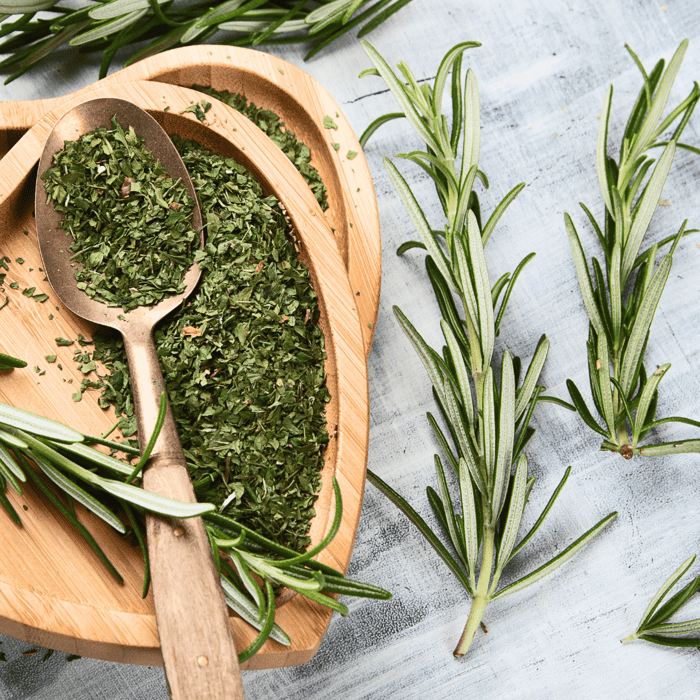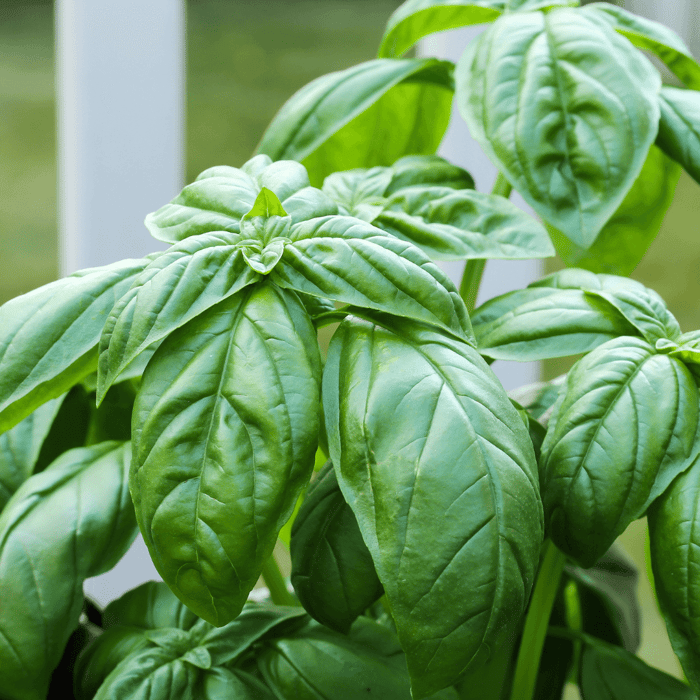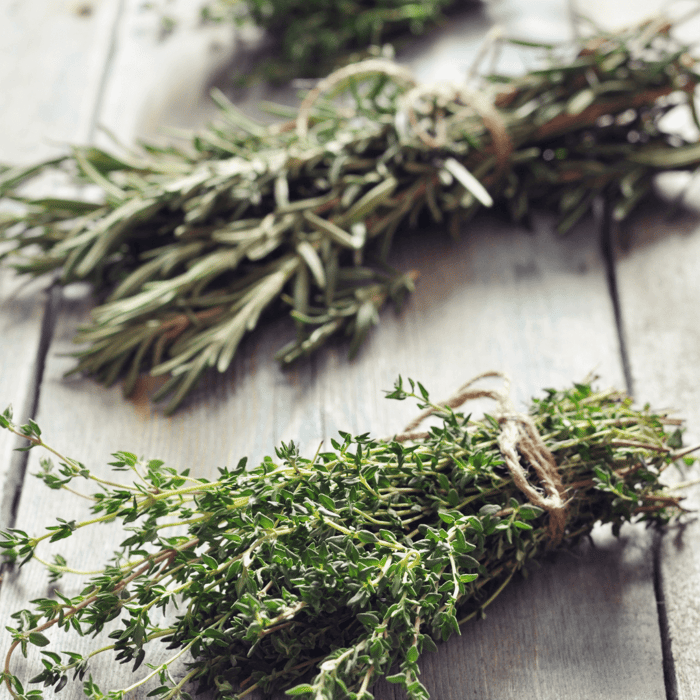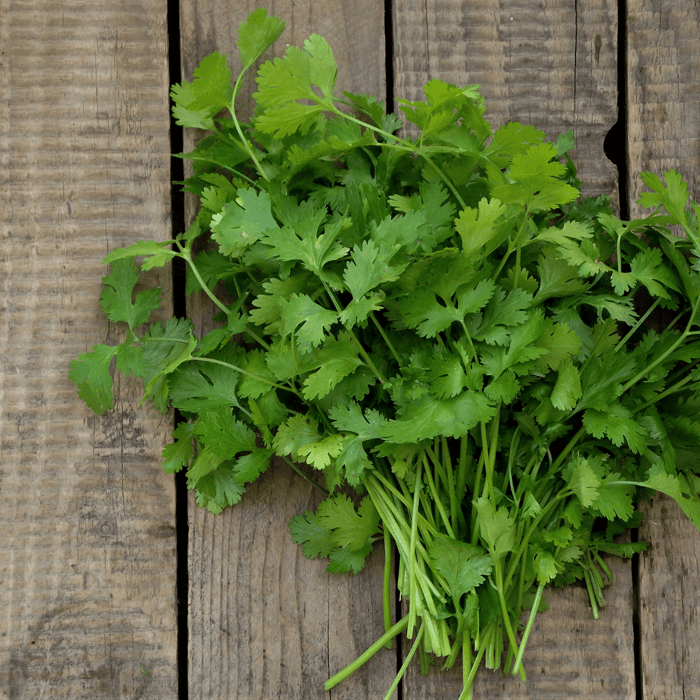Hello fellow gardeners! As an avid gardener myself, I am excited to share my expertise in growing rosemary from seed. In this in-depth, step-by-step guide, I will provide you with all the information you need to successfully germinate and cultivate your own rosemary plants. With over 1400 words and eight different headings, this article will cover everything from the history of rosemary to transplanting and harvesting your plants. Let's learn how to germinate rosemary seeds so you can have this awesome herb in your herb garden this year.
1. Introduction to Rosemary (Rosmarinus officinalis)
Rosemary is a popular herb that is not only used for its aromatic properties in cooking but also for its various medicinal benefits. Native to the Mediterranean region, rosemary is an evergreen perennial that can be grown both indoors and outdoors. Whether you're looking to grow rosemary in your garden or in a pot on your windowsill, this guide will help you successfully germinate and grow this wonderful herb from seed.
History of the Seed
Rosemary (Rosmarinus officinalis) is an ancient herb with a rich history dating back thousands of years. It has been used for various purposes, from culinary to medicinal to spiritual. In ancient Rome, it was believed to improve memory and was often used in weddings and funerals. Today, rosemary is prized for its fragrant leaves and its ability to thrive in various climates.
Rosemary Seeds
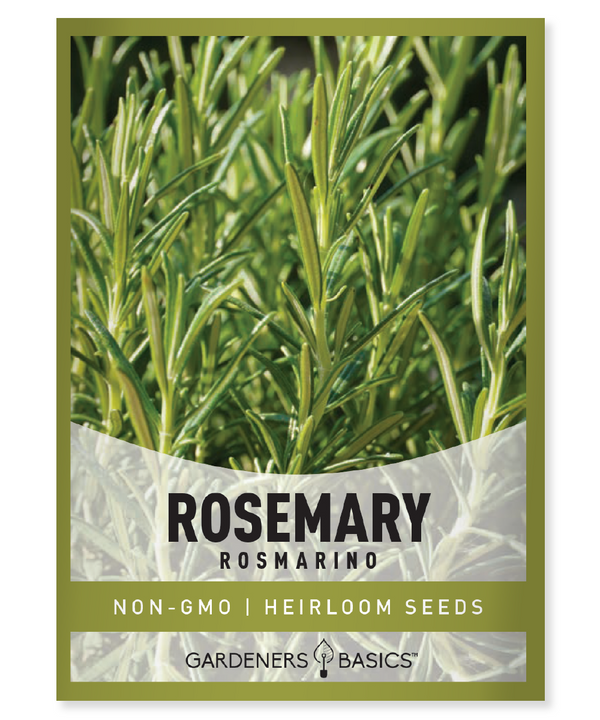
$2.49
Rosemary Seeds - Heirloom, Non-GMO, Non-Hybrid, Open-Pollinated Grow your own fragrant rosemary herb garden with our premium rosemary seeds, perfect for culinary use, container gardening, and adding beauty to your yard. These heirloom, non-GMO, non-hybrid, open-pollinated seeds ensure you’re cultivating… read more
2. Preparing to Grow Rosemary from Seed
Before you begin, gather the following materials:
- Rosemary seeds
- Seed starting mix
- Containers or seed trays
- Grow light (if starting seeds indoors)
- Well-draining soil
- Water
Days till Maturity
Rosemary typically takes about 3-4 months from germination to reach a size suitable for transplanting outdoors. After that, it will take another 2-3 months to reach full maturity, when it can be harvested.
Planting Depth and Spacing
Plant rosemary seeds at a depth of ¼ inch in your seed starting mix. Space seeds or seedlings 18-24 inches apart, as the plants can grow up to 4 feet tall and 4 feet wide.
Days to Germination
The germination rate for rosemary seeds varies, but you can expect to see sprouts within 2-3 weeks. Patience is key when germinating rosemary seeds, as they can take longer than other herbs to sprout.
3. Starting Rosemary Seeds Indoors
Weeks Before the Last Frost
Begin sowing your rosemary seeds 8-10 weeks before the last frost date in your area. This allows the seedlings to establish a strong root system and healthy foliage before being transplanted outdoors.
Seed Starting Mix and Containers
Fill your containers or seed trays with a high-quality seed starting mix, ensuring that it is well-draining to prevent root rot. Sow the seeds at the recommended depth and gently cover them with the mix.
Providing Adequate Light
Place the containers in a warm, well-lit area. If you don't have enough natural light, you can use a grow light to provide the necessary 10-12 hours of light per day. Keep the temperature between 65-75°F (18-24°C) to promote germination.
Watering and Care
Keep the seed starting mix consistently moist but not soggy. Allow the soil to dry out slightly between watering to prevent overwatering and root rot. Monitor the temperature and humidity, as rosemary prefers a relatively dry environment.
4. Transplanting Rosemary Seedlings
Hardening Off
Once the risk of frost has passed and your seedlings have at least two sets of true leaves, begin hardening them off. Gradually expose the seedlings to outdoor conditions over a period of 7-10 days. Start by placing them outside for a few hours each day, gradually increasing the duration and intensity of sunlight they receive.
Choosing the Right Location
When transplanting rosemary outdoors, choose a location with full sun or partial shade. Rosemary thrives in well-draining soil with a pH of 6.0-7.0. If planting in the ground, amend the soil with compost or aged manure to improve drainage and fertility.
Transplanting Process
When the seedlings are ready for transplanting, dig a hole slightly larger than the root ball, keeping the recommended plant spacing in mind. Gently remove the seedling from its container, taking care not to damage the roots. Place the seedling in the hole and backfill it with soil, pressing gently to remove any air pockets. Water the seedling well to help it establish itself in its new environment.
Popular Herb Seeds for Planting | 35 Variety Pack
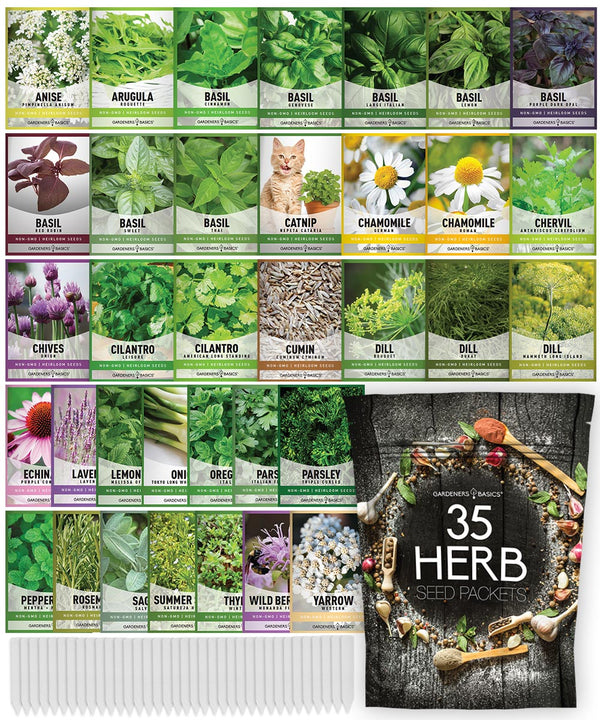
$29.95
$49.95
Heirloom, non-GMO herb seeds for indoor and outdoor home gardens! Introducing our 35 Herb Seeds Variety Pack, the ultimate selection for any herb garden enthusiast! This premium assortment includes heirloom herb seeds that are non-hybrid, open-pollinated, and non-GMO, ensuring you get only… read more
5. Growing Potted Rosemary
Potting Mix and Containers
If you prefer to grow potted rosemary, choose a container with drainage holes and fill it with a well-draining potting mix. A mix specifically formulated for herbs or succulents is ideal, as it provides the right balance of nutrients and drainage.
Watering and Fertilizing
Water potted rosemary when the top inch of soil feels dry to the touch, allowing it to dry out slightly between watering. Overwatering can lead to root rot, so it's essential to avoid soggy soil. Fertilize your potted rosemary every 4-6 weeks with a balanced liquid fertilizer during the growing season.
6. Caring for Rosemary Plants
Pruning and Maintenance
Prune rosemary plants regularly to encourage bushy growth and prevent the plant from becoming too leggy. Remove any dead or yellowing leaves and trim back any branches that are growing too long. When pruning, make clean cuts at the base of the plant, just above a leaf node.
Pests and Diseases
Rosemary is relatively pest and disease-resistant, but it can occasionally suffer from aphids, spider mites, and whiteflies. If you notice any signs of infestation, treat the plant with insecticidal soap or neem oil. Proper watering and well-draining soil can help prevent fungal diseases such as root rot and powdery mildew.
7. Harvesting Rosemary
When to Harvest
You can begin harvesting rosemary once the plant has reached full maturity, approximately 5-6 months after germination. The best time to harvest rosemary is in the morning after the dew has dried but before the heat of the day.
How to Harvest
To harvest rosemary, use clean, sharp scissors or pruning shears to cut off sprigs from the plant. You can either use the fresh rosemary immediately or dry it for later use.
8. Storing and Using Fresh or Dried Rosemary
Storing Fresh Rosemary
To store fresh rosemary, wrap the sprigs in a slightly damp paper towel and place them in an airtight container or plastic bag. Store the container in the refrigerator, where the rosemary should last for up to 2 weeks.
Drying and Storing Dried Rosemary
To dry rosemary, tie the sprigs together in small bunches and hang them upside down in a well-ventilated area away from direct sunlight. Alternatively, you can dry the sprigs on a screen or in a dehydrator. Once the rosemary is completely dry, remove the leaves from the stems and store them in an airtight container in a cool, dark place.
Herb Seed Assortment | 15 Variety Pack
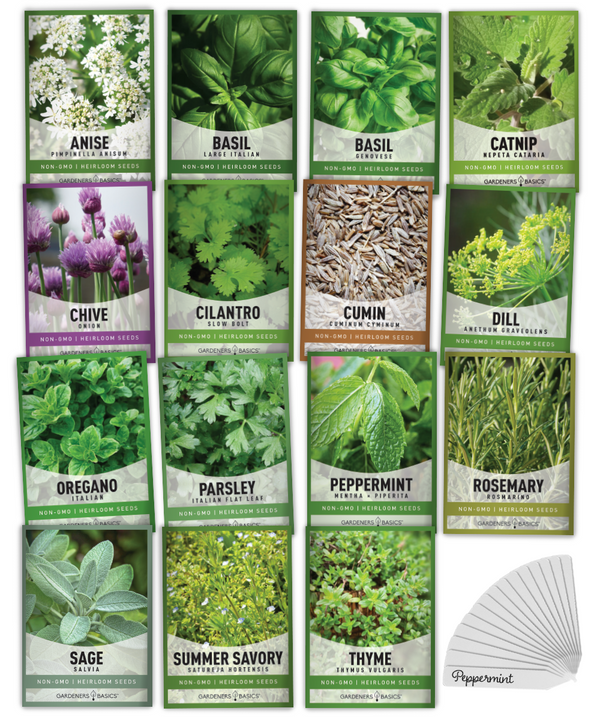
$19.95
Unlock the Power of Homegrown Herbs: 15 Heirloom Herb Seeds for Sustainable Gardening Introducing our 15 Herb Seeds Variety Pack—the ultimate collection for any home gardener, herbalist, or culinary enthusiast looking to grow fresh, flavorful herbs. Each of the 15 herb… read more
Using Rosemary in the Kitchen
Rosemary is a versatile herb that adds depth and flavor to a wide variety of dishes. Its earthy, slightly piney flavor pairs well with roasted meats, potatoes, vegetables, and even some desserts. Try incorporating rosemary into marinades, rubs, and sauces, or use it as a garnish to add a burst of flavor and aroma to your meals.
In Conclusion
Growing rosemary from seed may require a bit of patience, but the rewards are well worth the effort. By following this comprehensive guide, you will be able to germinate rosemary seeds, cultivate healthy rosemary plants, and enjoy fresh or dried rosemary in your favorite dishes. Remember to be patient during the germination process, provide your rosemary plants with the right growing conditions, and harvest and store the herb properly. By doing so, you can ensure that you have a continuous supply of this fragrant and versatile herb to enhance your culinary creations. Let's learn how to germinate rosemary seeds so you can grow this fun herb.
 Frequently Asked Questions - How to Germinate Rosemary Seeds
Frequently Asked Questions - How to Germinate Rosemary Seeds
Q: Can I grow rosemary from seed indoors?
A: Yes, rosemary can be grown from seed both indoors and outdoors. If you're growing it indoors, make sure to provide adequate light (using a grow light if necessary) and maintain a consistent temperature between 65-75°F (18-24°C).
Q: How long does it take for rosemary seeds to germinate?
A: The germination rate for rosemary seeds varies, but you can generally expect to see sprouts within 2-3 weeks. Remember that patience is key when germinating rosemary seeds, as they can take longer than other herbs to sprout.
Q: When should I transplant rosemary seedlings outdoors?
A: Transplant rosemary seedlings outdoors once the risk of frost has passed and the seedlings have at least two sets of true leaves. Be sure to harden off the seedlings gradually over a period of 7-10 days before transplanting them to their permanent location.
Q: How do I care for potted rosemary?
A: For potted rosemary, choose a container with drainage holes and fill it with a well-draining potting mix. Water the plant when the top inch of soil feels dry, allowing it to dry out slightly between watering. Fertilize every 4-6 weeks with a balanced liquid fertilizer during the growing season.
Q: When can I harvest rosemary?
A: Rosemary can be harvested once the plant has reached full maturity, approximately 5-6 months after germination. The best time to harvest is in the morning after the dew has dried but before the heat of the day.
Q: How do I store fresh or dried rosemary?
A: Store fresh rosemary by wrapping the sprigs in a slightly damp paper towel and placing them in an airtight container or plastic bag in the refrigerator. To dry rosemary, tie sprigs together in small bunches and hang them upside down in a well-ventilated area away from direct sunlight, or use a screen or dehydrator. Once dry, remove the leaves from the stems and store them in an airtight container in a cool, dark place.
Additional Tips for Growing Rosemary
Tip 1: Choose the right rosemary variety
There are several varieties of rosemary available, each with its own growth habits and flavor profiles. Some popular varieties include 'Tuscan Blue,' 'Arp,' and 'Prostrate.' Research the different varieties and choose one that best suits your needs and growing conditions.
Tip 2: Propagating rosemary from cuttings
If you have access to a mature rosemary plant, you can also propagate new plants from cuttings. This method can be faster and more reliable than growing from seed. To propagate, take a 4-6 inch cutting from a healthy, non-flowering branch, remove the lower leaves, and dip the cut end in the rooting hormone. Place the cutting in a container with moistened seed starting mix or perlite, and keep it in a warm, humid environment until roots develop.
Tip 3: Overwintering rosemary
In colder climates, rosemary may not survive the winter outdoors. To overwinter rosemary, bring potted plants indoors before the first frost, or dig up in-ground plants and transplant them into pots to bring inside. Place the plants in a cool, bright location and water sparingly throughout the winter.
Tip 4: Companion planting with rosemary
Rosemary is a beneficial companion plant for many vegetables and other herbs. Its strong scent can help repel pests like cabbage moths and bean beetles while attracting beneficial insects like bees and butterflies. Consider planting rosemary near beans, brassicas, carrots, and sage for a more productive and healthy garden.
By following this comprehensive guide and incorporating these additional tips, you will be well-equipped to successfully grow rosemary from seed and enjoy the numerous benefits of this versatile and aromatic herb.



